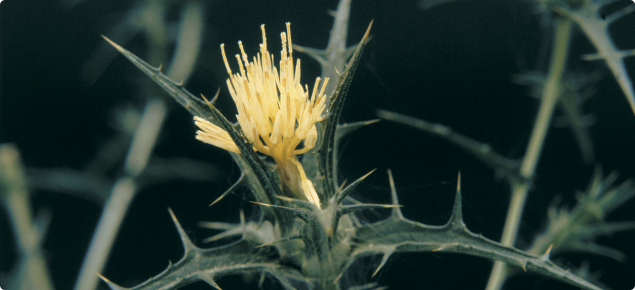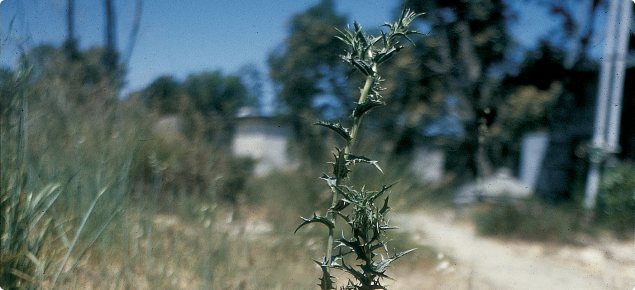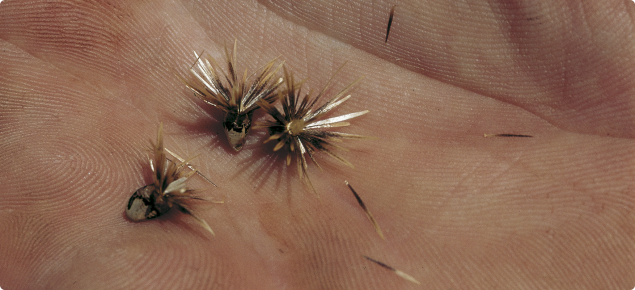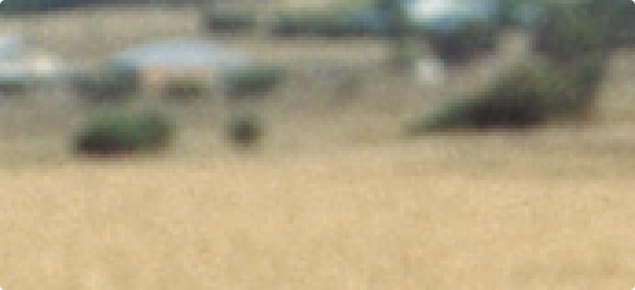What you should know about saffron thistle
Saffron thistle (Carthamus lanatus) is a member of the daisy family, Asteraceae, a very large family which includes many weeds as well crop plants, ornamentals and native species.
Saffron thistle is an important weed in most states of Australia and parts of New Zealand, the United States and South America. It is native to the Mediterranean region and was introduced to Western Australia (WA) in the late 19th or early 20th century. It is now widespread in parts of the cereal growing districts, the goldfields and other pastoral areas. Saffron thistle is weed in WA.
Why saffron thistle matters
Saffron thistle competes with crops and useful pasture plants for light, nutrients and moisture. Its stiff, spiny leaves discourage grazing and can injure the mouths and eyes of livestock. Hay and chaff contaminated with saffron thistle may have a similar effect. Dried saffron thistle parts may cause contamination and down-grading of wool, and injury to shearers. Cereal grain contaminated with saffron thistle seed is liable to a dockage.
What you should look for
In autumn and winter look for flat rosettes up to 15cm in diameter composed of dark green leaves, each with a broad terminal lobe and narrower irregular lobes along the sides. Each lobe ends in a short spine.
In late spring an erect stem develops which is usually 80–120cm high (but occasionally exceeding 150cm). After stem elongation and the formation of flowering heads the rosette leaves die off. The stem has whitish-green ribs and usually branches about half way up. Mature plants are very stiff and spiny.
In early summer, single yellow compound flowers form at the end of each stem or branch. Lance-like spines surround each flower. The seeds are large, about 6mm long, grey-brown with prominent ribs and a smooth seed coat.There are at least two forms of saffron thistle in WA. The differences between them are obvious at the rosette stage: one form has a narrow leaf and the other a broad leaf. The narrow leaf form, which is mainly along the Greenough flats, south of Geraldton, appears to germinate more readily than the widespread broadleaved form. There are also distinct differences in the shape of the seed and rate of stem growth.
A closely related species, glaucous star thistle (Carthamus leucocaulos), is very similar but with pale pink or purple flowers. It is a declared plant and is found only in the Tambellup area.
Life cycle
Saffron thistle is an annual plant reproducing only from seed. Some seeds have a pappus (parachute) consisting of stiff bristles, but they are too heavy to be carried far by wind. The bristles may aid spread by becoming attached to wool, hair or sacks, but saffron thistle seeds are most commonly spread as a contaminant in seed or grain, or with hay or chaff.
The seed may remain dormant in soil for up to eight years, but most seeds germinate within two or three years. The onset of germination is influenced markedly by higher soil temperatures in summer and length of time the seed is exposed to them. Generally saffron thistle seeds from the northern agricultural areas (Geraldton) have lower dormancy than seeds from southern infestations (Salmon Gums). Germination tends to be confined to a few weeks after the opening rains in the northern areas, but can be staggered through to September in southern areas such as Ravensthorpe. Seeds buried more than 5cm deep seldom germinate unless brought to the surface by cultivation. Many seeds are destroyed by termites.
What you can do about it
Saffron thistle usually germinates in autumn and early winter while warmer temperatures prevail. This causes some problems with treatment in the southern areas, because there is often a very staggered germination due to the cooler temperatures, whereas in northern areas large numbers of seeds germinate after the first rains.
A management programme conducted over several years is required to control saffron thistle, because of seed dormancy. This usually involves spraying in pastures for little or no economic return that year. Spray grazing the rosettes at stem elongation using sheep was successful when tested in the 1960s and 70s; however, it was difficult to manage the grazing in the saffron thistle areas where there are large paddocks. Research has trialled grazing by goats, which eat only the flowering heads. Another technique is to use herbicides applied after annual pastures have dried off and subclover seed has been buried, but before saffron thistle has set seed. This prevents saffron thistle seed set, while causing minimal damage to annual pasture including subclover; however, it still takes several years to reduce the saffron thistle seed bank.
New or isolated patches of saffron thistle must be controlled to prevent it spreading to new areas, glyphosate or 2,4-D amine are suitable herbicides for spot spraying these patches.
A saffron thistle control program can be fitted into most farm rotations. Consult with your farm advisor regarding a cropping schedule that will incorporate saffron thistle control. A suggested rotation for paddocks heavily infested saffron thistle is:
- Year 1 crop, cereal (see suggested herbicides in table below)
- Year 2 crop, cereal
- Year 3 crop, canola
- Year 4 return to pasture, spot spray or spray graze or apply herbicides to prevent flowering plants forming seed.
Further information?
The book Noxious Weeds of Australia, by WT Parsons and EG Cuthbertson (2001, CSIRO Publishing) has detailed information about all the thistle species that are declared noxious in every State.
For more information on gorse, search this website or contact the Pest and Disease Information Service.
The CSIRO biological control webpage has information about the biological control of some thistles, but not saffron thistle.





